Key takeaways:
- Storytelling creates connections and fosters community in workshops, enhancing participant engagement.
- Key components of effective storytelling include authenticity, structure, and the use of imagery to evoke emotions.
- Interactive elements, role-playing, and visuals can significantly boost participant engagement and understanding during workshops.
- Vulnerability in storytelling invites empathy and facilitates deeper discussions, transforming group dynamics.
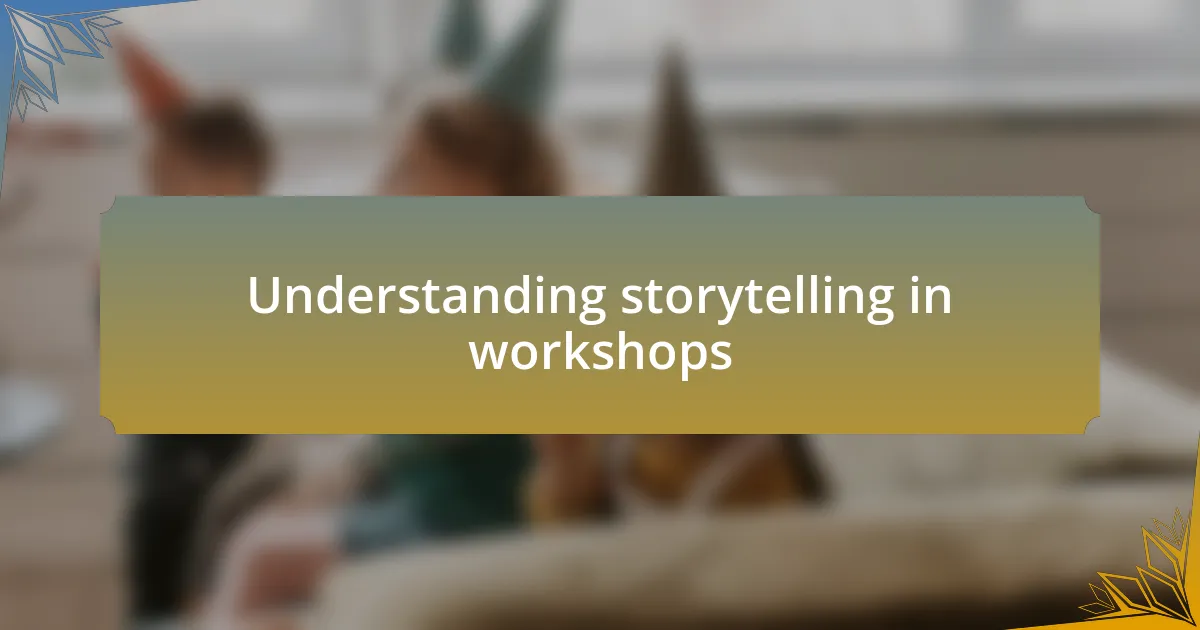
Understanding storytelling in workshops
Storytelling in workshops is more than just sharing information; it’s about creating connections. I vividly remember a workshop where a facilitator shared a personal failure that transformed into a significant learning moment. This raw honesty not only captured everyone’s attention but also encouraged others to share their experiences, fostering a sense of community. Have you ever noticed how a well-told story can make you feel more invested?
When I first started using storytelling in my workshops, I was surprised by its power to engage participants. I had crafted a narrative around a challenging project and the setbacks we faced. As I spoke, I could see faces light up with understanding and empathy. Isn’t it fascinating how a simple story can bridge gaps in understanding and make complex concepts more relatable?
I’ve learned that the best stories evoke emotions and urge listeners to reflect. For instance, I once incorporated a story about a customer who felt unheard in a service situation. The emotional weight of that tale prompted participants to brainstorm ways to enhance customer experience. This blend of storytelling and practical application not only sparked creativity but also deepened our discussions. How can we harness this power of storytelling to improve our own workshops?
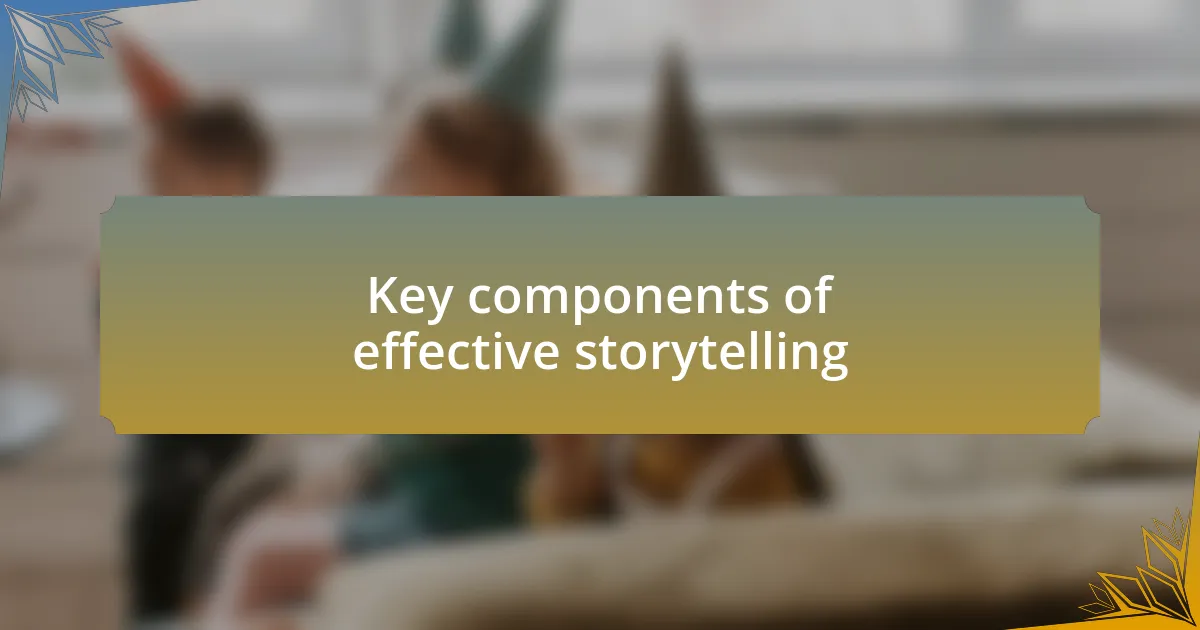
Key components of effective storytelling
Effective storytelling hinges on authenticity. I recall a moment during a workshop when I shared a story about my first encounter with a challenging client. I spoke candidly about my initial mistakes and how that experience shaped my approach to customer service. This vulnerability not only resonated with the participants but also sparked their own sharing, creating an engaging dialogue all around.
Another key component is structure. A well-crafted story has a clear beginning, middle, and end. In one workshop, I structured a narrative around a product launch. Starting with the excitement of the concept phase, moving through the trials and tribulations of execution, and concluding with the eventual success created a journey that everyone followed eagerly. Participants expressed feeling as though they were part of the experience. Isn’t it powerful how a structured story can create a shared emotional journey?
Lastly, imagery and sensory details are vital. I learned this when I described the atmosphere of a bustling café where a critical customer interaction took place. By painting a vivid picture, I noticed participants leaning in closer, visualizing the scene. This connection helped them better understand the emotions at play in customer experiences. Could you imagine how different discussions would be if we could all visualize those moments in our storytelling?
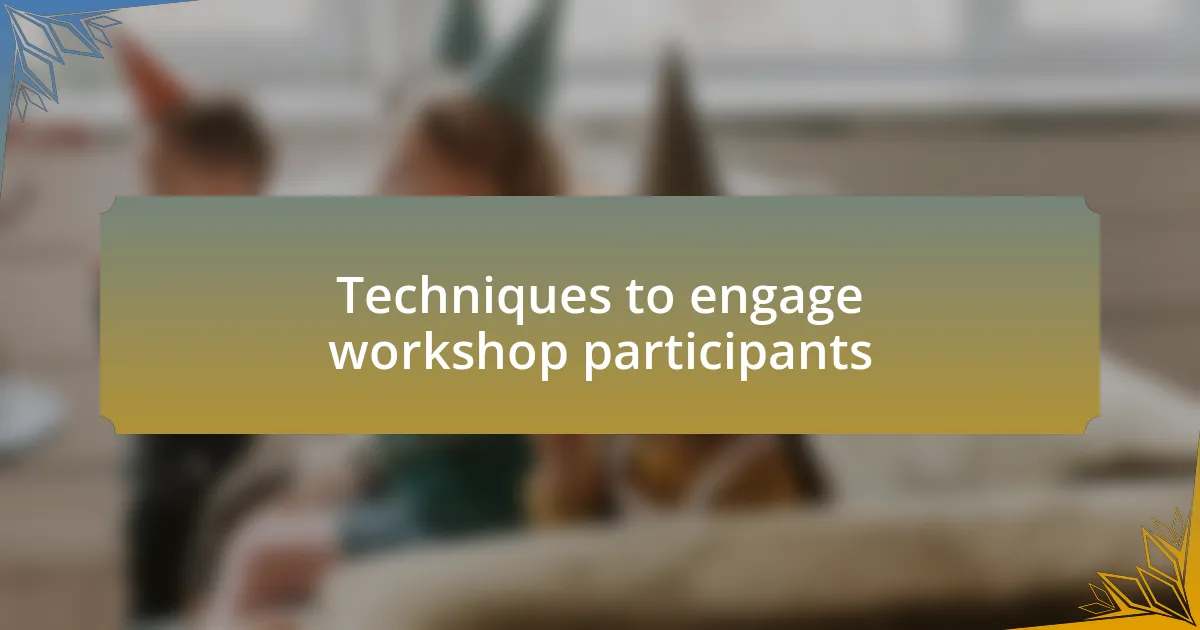
Techniques to engage workshop participants
One technique that has always worked for me is incorporating interactive elements into workshops. During a recent session, I used live polls and breakout groups to encourage participants to share their thoughts on what they found challenging in their own customer interactions. The energy in the room changed instantly; people were no longer just passive listeners but active participants. Don’t you find that when individuals contribute their experiences, the discussion becomes much richer and more meaningful?
Another effective approach is storytelling through role-playing. I once organized an exercise where participants acted out various customer scenarios based on real-life experiences. The laughter and genuine engagement that followed revealed just how powerful this method can be. Participants not only learned from acting out the stories but also gained insights into the different perspectives involved. Isn’t it fascinating how stepping into someone else’s shoes can change our understanding of customer experience?
Lastly, I’ve seen success when using visuals to complement storytelling. In a workshop, I included striking images and short video snippets to accompany my narratives. I noticed that these visuals didn’t just reinforce the points I was making; they evoked emotions that words alone sometimes can’t convey. When we can see the passion, joy, or frustration, it makes the experience so much more relatable, doesn’t it? Engaging sights can anchor the stories we tell and make them unforgettable for participants.
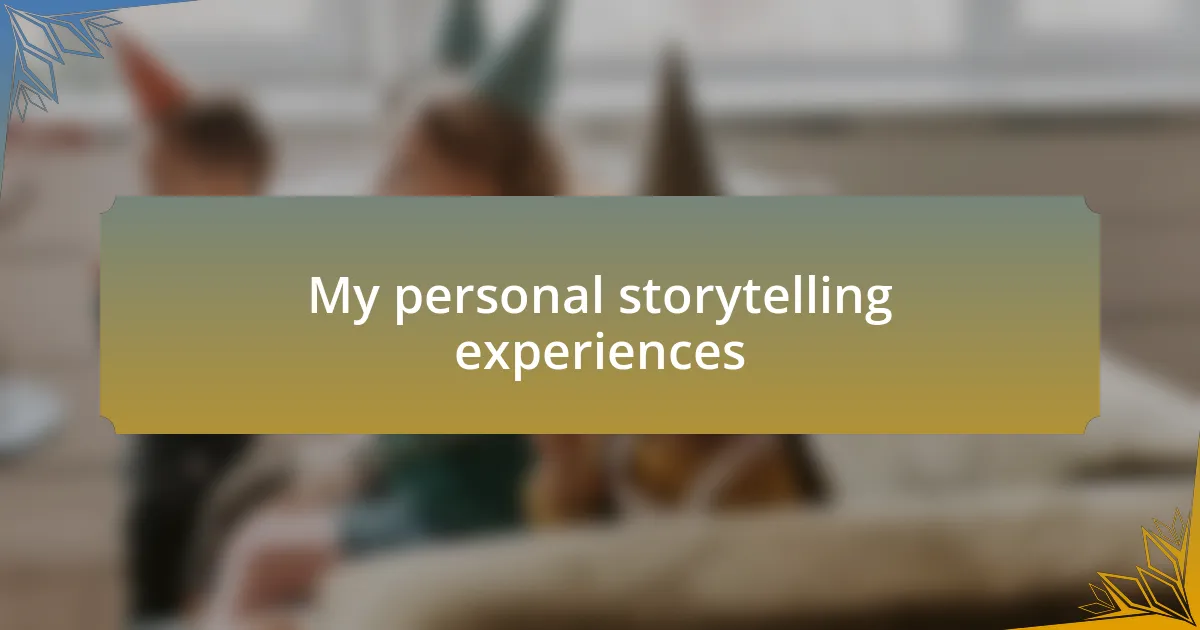
My personal storytelling experiences
Looking back at my experiences, I’ve found that personal stories resonate deeply with workshop participants. During one particular session, I shared a tale from my early career—when I mishandled a customer complaint that spiraled out of control. The cringe-worthy moment sparked laughter and an instant connection, as many attendees could relate to facing their own crisis in customer service. Isn’t it amazing how vulnerability can transform a room full of strangers into a community?
Another memorable experience unfolded in a workshop focused on customer journey mapping. I vividly recounted my encounter with a bewildered customer who navigated our service in a completely unexpected way. Sharing my initial frustration quickly morphed into a light-hearted discussion about the unpredictability of human behavior. It dawned on me how storytelling not only brings humor to mishaps but also fosters a collective understanding of the diverse experiences we face in customer interactions. Have you noticed how laughter can defuse tension and create a willingness to engage more openly?
Incorporating storytelling into my workshops has also led to profound moments of reflection. During a session, I prompted participants to think of a time when they made a memorable impression on a customer. As stories unfolded, I witnessed this magical shift—participants not only shared their successes but also their learning experiences. It reminded me of the power of narratives; they help us not just to convey information but to explore our emotional connections to the work we do. Isn’t it enlightening when we realize that our storytelling can inspire change in others while also paving our own paths to growth?

Lessons learned from storytelling workshops
Engaging in storytelling workshops has taught me the importance of authenticity. During one session, I decided to share a personal failure that shaped my approach to customer interactions. The raw honesty opened the floodgates, prompting others to share their missteps. It was a powerful reminder that our struggles can build bridges of empathy and connection. Have you ever noticed how vulnerability invites others to share their own stories?
I’ve also learned that the structure of a story can significantly impact its message. A fellow participant once presented a story framed as a journey, complete with a problem, a turning point, and a resolution. The narrative flowed beautifully, and it captivated everyone’s attention. Reflecting on this experience, I now strive to craft my stories with intentionality. Does anyone else feel that a well-structured story can make a world of difference in how we engage our audience?
One of the most eye-opening lessons was recognizing the transformative nature of feedback. I remember a workshop where we shared our stories in pairs and provided constructive critiques. The insights I gained from my partner about pacing and emotional resonance were invaluable. This reciprocal exchange not only helped me sharpen my storytelling skills but also reinforced the idea that improvement thrives in community. Isn’t it fascinating how collaborative storytelling can lead to mutual growth and deeper connections?
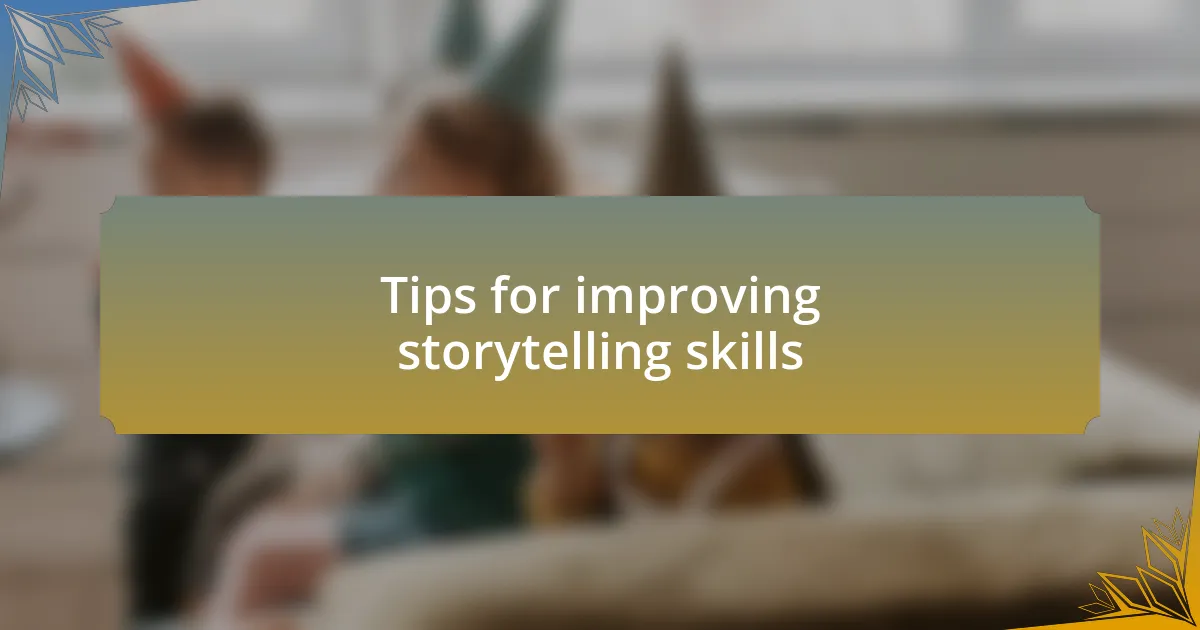
Tips for improving storytelling skills
To enhance your storytelling skills, one effective tip is to practice regularly, even in informal settings. I recall an instance where I began sharing short anecdotes with friends during casual gatherings. This not only allowed me to experiment with different styles and tones but also helped me gauge my audience’s reactions in real-time. Have you tried practicing your narratives in everyday conversations?
Another powerful technique is to immerse yourself in diverse storytelling formats. During a workshop, I was inspired by a participant who utilized visual aids and music to elevate their narrative. This experience taught me that combining different mediums can enrich a story’s impact. It’s intriguing to think about how much more we can convey through multisensory experiences, isn’t it?
Lastly, focusing on emotional connection can significantly elevate your storytelling. I once crafted a story centered around a seemingly trivial moment, but when I infused it with genuine emotions, the response was electrifying. People connected deeply with the feelings behind the events, prompting rich discussions afterward. Have you noticed how sharing emotions can create a lasting bond with your audience?